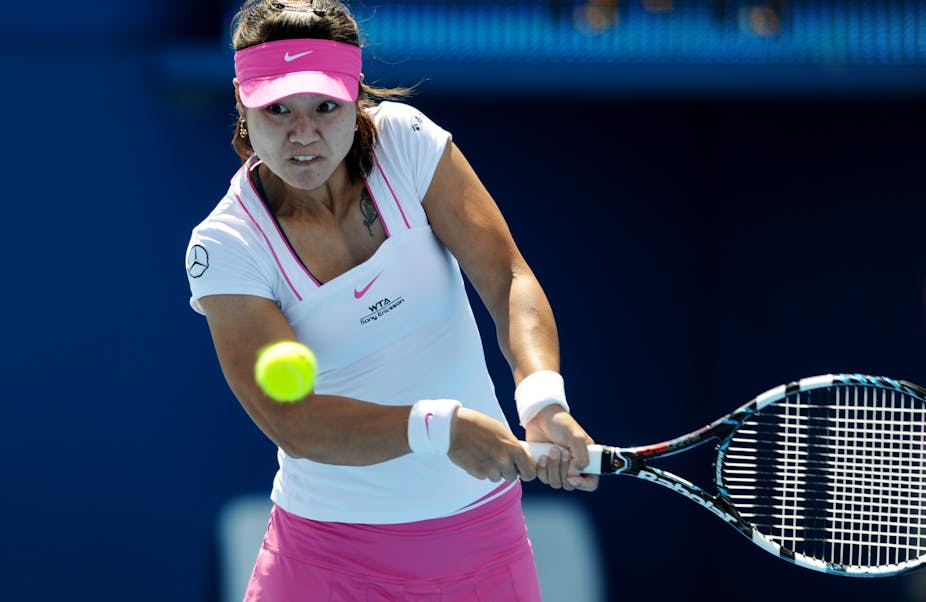Australia’s summer of tennis is a great opportunity to see the world’s best players up close, hitting hard and serving big. Many elite players hit first serves at over 200km/h with great precision and massive amounts of spin.
But a 200km/h serve gives an opponent just one third of a second to assess the ball’s flight and produce a well-timed return. So how do the professionals return a ball that most of us would never even see?
Blink and you’ve missed it
Understanding the battle between serve and return has been of interest to sports scientists for many years. Anticipatory skill research has focused on what information a receiver can use in advance of the serve being struck to determine its likely direction.
It shows skilled players use both situational probability – strategic information based on server preferences related to the score – and the biomechanical elements of the server’s technique to predict the likely service direction.
Skilled players are sensitive to tactical patterns in the game as awareness of specific event probabilities buys them additional time to prepare a response.
For instance, a recent experiment presented tennis players with video sequences of a simulated match where a server’s first serve in the first point of each game was manipulated so it was served to the same location.
Skilled players were able to pick up the occurrence of this event (cue) by the end of the first set. In contrast, lesser skilled players were unable to detect this pattern. Awareness of this information results in the skilled player being able to prepare their return before the ball has even been tossed.
Biomechanical tactics
The use of these tactical probabilities is reinforced in comments made by professional players. For example Justin Gimelstob surmising how Andy Roddick defeated Andy Murray in a past match: “In the past he was too dependent on his serve up the T on the Ad(vantage) side, yesterday he kept one of the best returners off balance by mixing up his spots which allowed him to use his favourite serve up the T on the Ad - when he needed it - for free points”.
In order to understand how the biomechanical elements of the server’s action may provide anticipatory information, scientists have employed a novel approach to control how much of the service action a receiver sees before being required to select their response.
Seeing it before it happens
For example, through the use of customised goggles that provide visual snapshots of a server’s action, the receiver may see the service action up to the point of racquet-ball contact but don’t see ball flight. Or even more challenging, the receiver’s vision is masked when the ball reaches the peak of the toss.

The logic behind this approach is that if return of serve prediction can be maintained above guessing levels under these restricted viewing conditions the player must be cueing into useful information that can forecast the service outcome.
Research has consistently revealed that skilled players are able to accurately predict service direction some 300 milliseconds before the serve is actually struck!
This finding suggests that skilled players can interpret where the ball is going to be hit based on the mechanics of service action. For instance, the location or height of the ball toss and angle of the racquet as it’s thrown toward the ball seem to be most informative.
Hiding the serve
As these elements occur well before the ball flies off the racquet it provides the receiver more time to plan their return stroke. In contrast, lesser skilled players are reliant on ball flight information and consequently are left with little time to prepare an appropriate response. The net result in such instances is being “aced” or, at best, a rushed response.

Not surprisingly, the best servers in professional tennis are those that stay one step ahead of their opponents by disguising these cues. Famously Pete Sampras’ coach during training used to call what serve Pete had to hit as he tossed the ball. The result of such training was a consistent action that provided little anticipatory information to a receiver.
And so the challenge continues for receivers and researchers alike.

